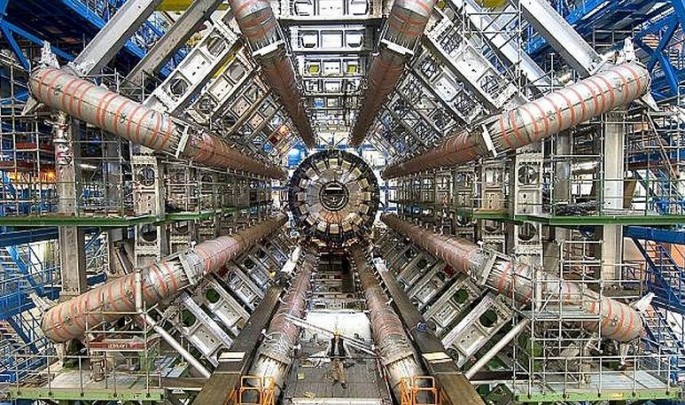Physicists will use the upgraded Large Hadron Collider to test an astounding new theory that proposes the Higgs boson or "God particle" could be a source of energy that creates dark matter.
This new model proposed by Dr. Christopher Petersson from Chalmers University of Technology in Sweden deviates from the Standard Model of Physics that's quite good at describing physics on a subatomic level but can't account for dark matter in the universe.
Dark matter appears to make up at least 85 percent of the matter in the known universe.
The Higgs boson is an elementary particle in the Standard Model of particle physics. Its main relevance is that it allows scientists to explore the Higgs field that explains why some fundamental particles have mass even though the symmetries controlling their interactions require them to be massless.
Dr. Petersson and two colleagues propose the Higgs boson itself could disintegrate into dark matter. They came up with the new particle model to predict the existence of dark matter. That model will be tested on the LHC that will be restarted this spring.
Dr. Petersson suggests the Higgs boson may decay in an alternative way than what has been observed to date. This decay path that is governed by supersymmetry, said Discovery.
Supersymmetry predicts there are more massive "super partners" of known particles that exist beyond the Standard Model framework. Supersymmetric particles have been very hard to track down.
Dr. Petersson's model, however, contains more "elementary particles" (the smallest particles known to exist) than the Standard Model. These particles include dark matter particles.
His model also gives the Higgs particle different properties, suggesting it can disintegrate into a photon (or a particle of light) and particles of dark matter.
He needs a particle accelerator such as CERN's LHC to prove his theory and CERN has allowed him to do just that.
Two teams, Atlas and CMS (Compact Muon Solenoid), are running two independent experiments on the LHC to search for evidence of Dr. Petersson's particles. Both teams worked on the original Higgs discovery.
If Dr. Petersson's model is confirmed by LHC data, it will completely change the understanding of the fundamental building blocks of the universe.



























